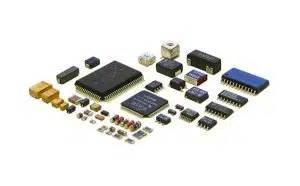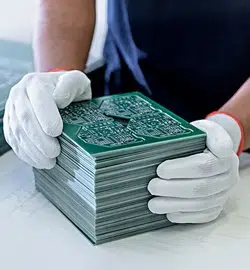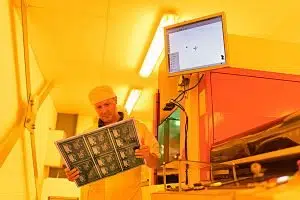PCB Assembly Testing and Inspection
Automated Optical Inspection (AOI)
WHAT IS INLINE AUTOMATED OPTICAL INSPECTION (INLINE AOI) FOR PCB ASSEMBLY?
Automated Optical Inspection (AOI) is an inspection that inspects densely populated PCBs in seconds. It includes the inspection of even the tiniest components and checks for connectivity. Moreover, it inspects the polarity, missing, reversed, or damaged components.
AOI also checks for extra or no solder on the PCB and flux deposits and solder bridging.
What is AOI?
The Necessity of Automated Optical Inspection
Inevitability
PCB serves as an electrical connection among the components, specifically on the bare boards that are used in different types of electronic devices. These devices range from simple electronic equipment like calculators and watches to complex military and medical devices. Due to the advancement of technology, there is more demand for PCB than there was before. This is the reason the PCB circuits are getting more complicated each day. SMT or Surface Mount Technology enables the PCB to minimize its size and increase its efficiency.
More Reliable and Quickly
Inspection of PCB is very important as it is a quality measure for the consumer. However, manual inspection methods are not acceptable anymore because it fails to inspect the internal issues and defects of the PCB. Moreover, it is quite slow and cannot meet the current demand. Nowadays, people require a reliable and quick inspection method, due to which AOI (Automated Optical Inspection) has become significant. It not only ensures the functionality of the PCB but also reduces cost and finds issues with PCB in the beginning.
When to Use AOI in PCB Assembly
There are different stages in which AOI is used in PCB Assembly. It has several applications and the PCB manufacturing companies tend to take advantage of their new inspection method.
Firstly, AOI can be used to inspect the solder paste. The solder paste inspections check the boards before the components are placed on the PCB so that there is no issue with the board afterward.
Most people don’t know that AOI is also helpful in template matching. Template matching means that the solder paste is in a perfect location on the PCB. So, AOI makes sure that components are placed at the correct locations.
AOI can be used in statistical pattern matching and pattern matching. Besides inspecting for the correct placements of the components on the board, it also inspects for solder bridges that can affect the functionality of the PCB. The functionality also depends on when the traces are too thin or wide. AOI can detect this issue because many inspection methods don’t have this feature.
AOI can also inspect for open and short circuits on the boards. By comparing images, AOI can also detect the missing components and also determine if the components are wrongly placed.
No PCB can leave the company premises before going through an AOI inspection. Therefore, the performance, quality, and reliability of the PCB are ensured.
Advantages of Automated Optical Inspection
There are two types of Automated Optical Inspection (AOI) systems that are used in the market. One is 2D, and the other is 3D.
3D AOI has much more accurate inspection and measurement than 2D AOI, and it is also more stable than 2D.
Both of these inspection systems have their advantages. Let us see what these both bring to the table.

2D AOI Advantages
- It is less susceptible to shadowing problems.
- 2D AOI offers flexible inspection capabilities.
- Simple and straight polarity marks.
- It can read data matrix code.
- Able to perform color analysis and measurement tasks.
- This AOI offers OCR (Optical character recognition) and OCV (Optical character verification).
3D AOI Advantages
- Besides having all the advantages of a 2D AOI system, it has accurate volumetric inspection data.
- It can perform a coplanar inspection.
- Lastly, it reduces the false call rate.
3D AOI is a little complex and requires advanced programming for defect detection, which in return increases the price of PCB.
Quality is our lifeline. In order to ensure the quality of PCBA products, we will provide various PCB assembly tests and inspection methods according to customers’ requirements:
PCBA testing:
- In-Circuit Test (ICT)
- Functional Test (FCT)
- Burn-In Test
- Severe Conditions Test
- Fatigue Test
- Flying Probe Testing (FPT)
PCBA inspection:
- First Article Inspeciton (FAI)
- Manual Visual Inspection
- Automated Optical Inspection (AOI)
- X-Ray Inspection (AXI)
- Solder paste Inspection (SPI)
During production and before delivery, we will also implement strict quality management:
Looking for a satisfactory PCB assembly manufacturer? Please ask for our help. For more information, please contact us at sales@pcbjhy.com.












